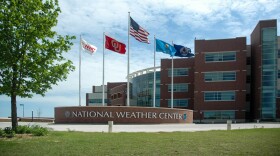The City of Oklahoma City is looking for volunteers to collect data as part of a national project studying heat in urban areas.
Upward of 300 street scientists are needed for the National Oceanic and Atmospheric Administration’s urban heat island campaign.
Not all parts of Oklahoma City are equally hot. Urban heat islands, with fewer trees and more blacktop roads, can be 20 degrees hotter than neighborhoods with more foliage and less asphalt.
And, that means that not everybody in OKC is impacted by the high temperatures in the same ways.
“In general, research tells us that low-income, minority communities, disadvantaged communities feel the heat effects more so than affluent communities,” said Sarah Terry-Cobo, a planner in the City of OKC’s Office of Sustainability.
People with health issues, kids, the elderly and pregnant people are also more vulnerable to extreme heat.
The project seeks to map these urban heat islands. The data collected will be used to create a report for local leaders on how to reduce the health impacts of extreme heat.
“That could be anything from starting a cooling center or providing more resources to an existing cooling center,” Terry-Cobo said. “It could also could be prioritizing where bus shelters should be built, because a lot of bus stops around the city are just a pole with a sign on it, they don't have coverage, or any kind of shading.”
Another heat mitigation strategy could be increasing green spaces in the city.
This August, on one of the hottest days of the year, teams of volunteers will drive assigned routes through 350 square miles of Oklahoma City collecting information about temperature, air quality and location.
Anyone is able to sign up to volunteer and participate in the data collection. Two training sessions will take place online this month, on July 13 and 27.
This report was produced by the Oklahoma Public Media Exchange, a collaboration of public media organizations. Help support collaborative journalism by donating at the link at the top of this webpage.








